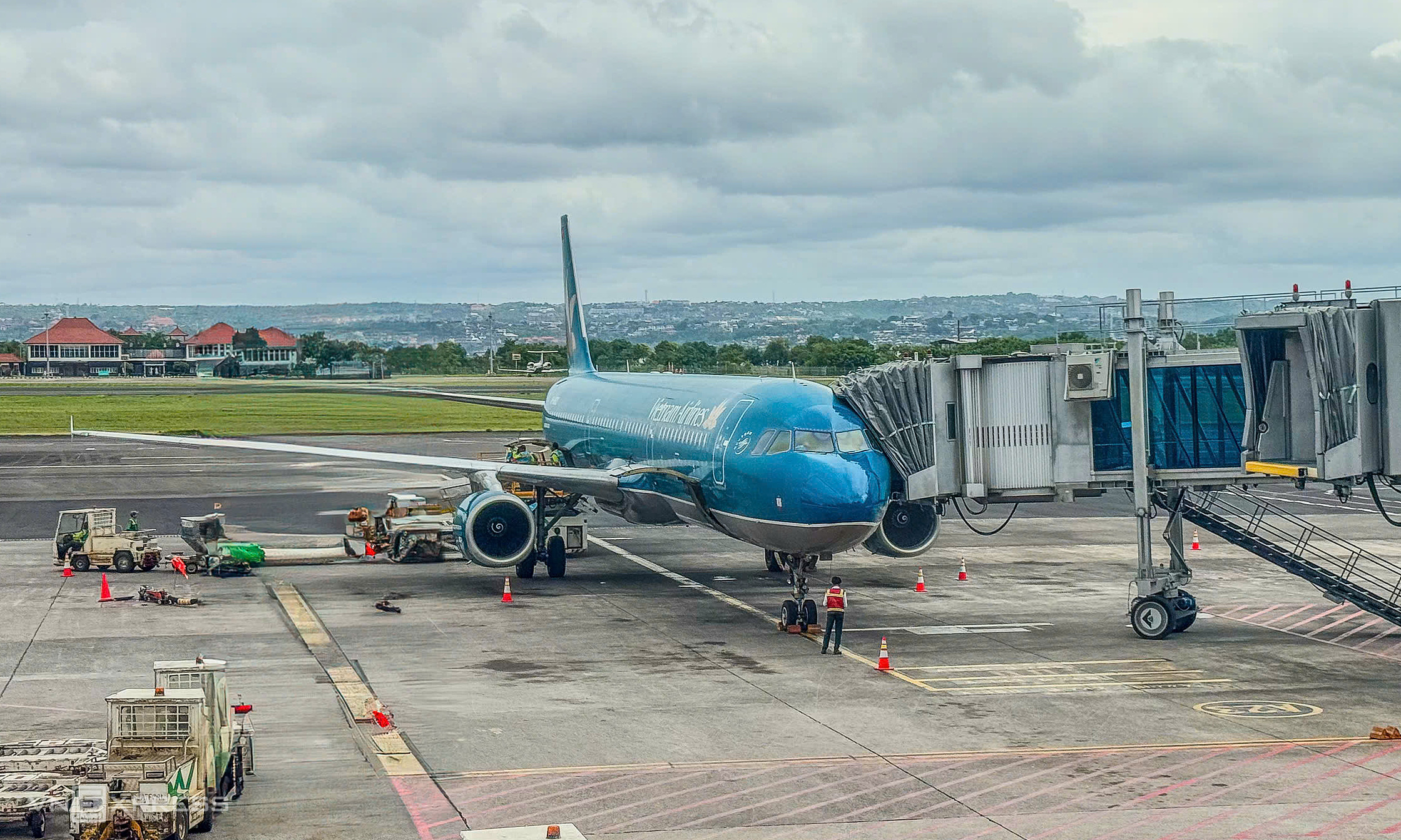After returning to Bali after three years, Ngoc Yen said her recent trip was much more convenient and affordable thanks to the direct flight from Ho Chi Minh City. Previously, she had to transit in Singapore for several hours, which was both time-consuming and costly.
"Now with direct flights, we don't have to transit, it's easier to change tickets, the flight attendants speak Vietnamese, and the meals suit our taste," Yen said.
VnExpress has also observed a recent surge in direct flights from Vietnam to countries in Asia and Europe. Vietnam Airlines is leading the charge with several new routes: Ho Chi Minh City - Bali, Hanoi - Bengaluru, Hanoi - Hyderabad, Ho Chi Minh City - Copenhagen, Hanoi - Milan, and more.
A representative of Vietnam Airlines Group said the airline has restored and expanded its international network "at an unprecedented pace." In 2024 and the first half of this year, the airline added 13 new international routes, bringing the total to 69, connecting to 37 destinations in 21 countries, a 13% increase compared to the pre-Covid-19 period.
Notably, the airline also launched its first direct route between Vietnam and Denmark and restored important routes such as Hanoi - Moscow and Ho Chi Minh City - Osaka. The airline plans to increase the frequency of Ho Chi Minh City - Bali flights to seven times per week starting in July. With international routes, the airline's transport revenue in the first six months of the year increased by 10.6% year-on-year, accounting for 60% of total transport revenue.
 |
A Vietnam Airlines aircraft carrying passengers on the Ho Chi Minh City - Bali route landed at Bali airport on 4/6. Photo: Giang Huy |
A Vietnam Airlines aircraft carrying passengers on the Ho Chi Minh City - Bali route landed at Bali airport on 4/6. Photo: Giang Huy
Simultaneously, Vietjet Air is expanding into the Indian market, operating several routes connecting Vietnam with major cities like Mumbai, Ahmedabad, and Hyderabad. In mid-June, the airline launched its first routes between Nha Trang and three cities in the Russian Far East: Vladivostok, Khabarovsk, and Blagoveshchensk. In early July, the airline inaugurated the Hanoi - Chengdu (China) route.
Vietjet plans to expand into Oceania with a route to Auckland (New Zealand) in September.
Bamboo Airways, after a restructuring phase, is focusing on short-haul routes with flexible frequencies, such as Bangkok, Taipei, and Seoul. Vietravel Airlines is expanding charter cooperation, serving package tours to South Korea, Japan, and Thailand, focusing on high-end customers.
To date, Vietnamese airlines are operating over 150 international routes, surpassing the pre-Covid-19 mark. According to the Civil Aviation Authority of Vietnam (CAAV), the rapid expansion and restoration of the international flight network are primarily aimed at securing slots at major airports and capitalizing on the recovery of tourism and trade demand.
Conversely, popular tourist destinations in Vietnam such as Da Nang, Nha Trang, and Phu Quoc continue to be favored by international visitors. Airlines plan to increase the frequency and open more international routes to these locations to boost two-way operations, improve fleet efficiency, and support tourism stimulation.
Airlines say the reopening of key routes is not only a "bridge for trade and tourism" but also a strategy to strengthen Vietnam's position in the global transportation network.
"We are not chasing quantity but selecting highly connected destinations, serving both passengers and cargo," said a representative of an airline.
According to a Vietnam Airlines flight attendant, many passengers on the Ho Chi Minh City - Bali route appreciate the convenience of flying with a Vietnamese airline, especially in terms of communication and procedures. Some new routes, such as Hanoi - Hyderabad, are also attracting passengers due to competitive fares and easy domestic connections at the destination.
Several travel agencies in Hanoi report a significant increase in demand for direct flights to destinations like India and Bali in Quarter II. According to Pham Thi Thu's agency (formerly in Cau Giay district), direct flights are very attractive to independent travelers and business travelers because they save time and transit costs and make it easier to arrange schedules.
Airline representatives also believe that positive financial results are the foundation for continuing to expand and maintain a stable international flight network until the end of this year. Vietnam Airlines prioritizes routes with high connectivity, serving both passengers and cargo. Vietjet emphasizes that penetrating large markets like India, China, Russia, and Oceania is a long-term step to expand growth opportunities.
Associate Professor Dr. Nguyen Thien Tong said: "Opening international routes is a strategic step to enhance the national brand, but operational efficiency and service quality are the decisive factors in maintaining stable routes."
He believes that if the new routes do not achieve financial efficiency, airlines may face the risk of fleet surplus and operational losses. In addition, rising fuel and aircraft lease costs are putting significant pressure on profit margins, especially for newly restructured airlines that lack a solid financial foundation.
According to Thien, price competition while input costs increase, along with unstable demand in some markets, will be risks. In addition to expanding the flight network, this expert emphasizes the need to synchronize ground services, immigration procedures, and airport experiences. Without these factors, expanding the flight network may be merely symbolic.
Thi Ha












